Gone With Dog Fleas – Everything You Need To Know
Dog fleas are a nuisance. A good place to start is with preventing or getting rid of pesky dog fleas. Read on to find out how to nip the problem in the bud early on, leaving your dog parasite-free all year long.
FLEAS FLEAS ON DOGS
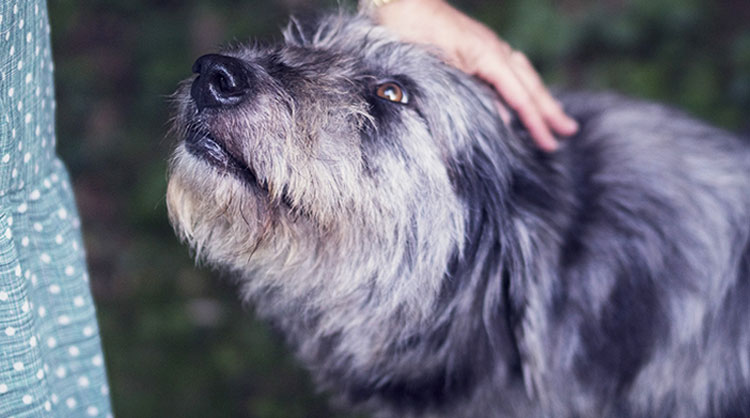
Posted by bravectosouthafrica – 20 January 2020
No more dog fleas! Life has enough problems, fleas on your dog shouldn’t be one of them.
An itchy dog is an unhappy dog and, as all loving pet owners can attest to, seeing your dog in discomfort or pain is heart-breaking. Lucky for you and your best friend, Bravecto® makes preventing and getting rid of fleas, ticks and mites for the long term a breeze.
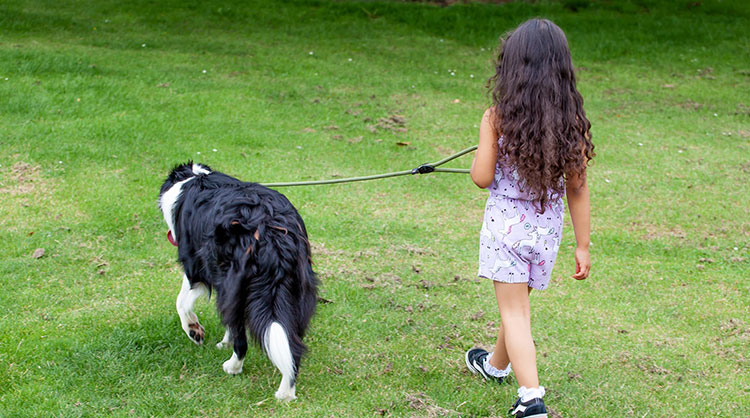
How the Dog Flea Life Cycle Works
Because fleas are one of the most common external parasites to infest dogs and cats, it’s likely that your pet has experienced this problem in the past. If you want to completely eradicate these minuscule menaces from your dog and home, it is vital that you understand their life cycle.
The flea life cycle consists of four distinct stages:
- Egg
- Larva
- Pupa
- Adult
As soon as fleas reach adulthood, they are able to lay a staggering 50 eggs per day. These flea eggs can easily fall from your dog and be spread around the house, landing on various furnishings. It only takes between 1-10 days for the eggs to hatch and the larvae to emerge. Nearly 30% of the larvae that emerge will mature into adult fleas and start the dreaded itchy cycle all over again.
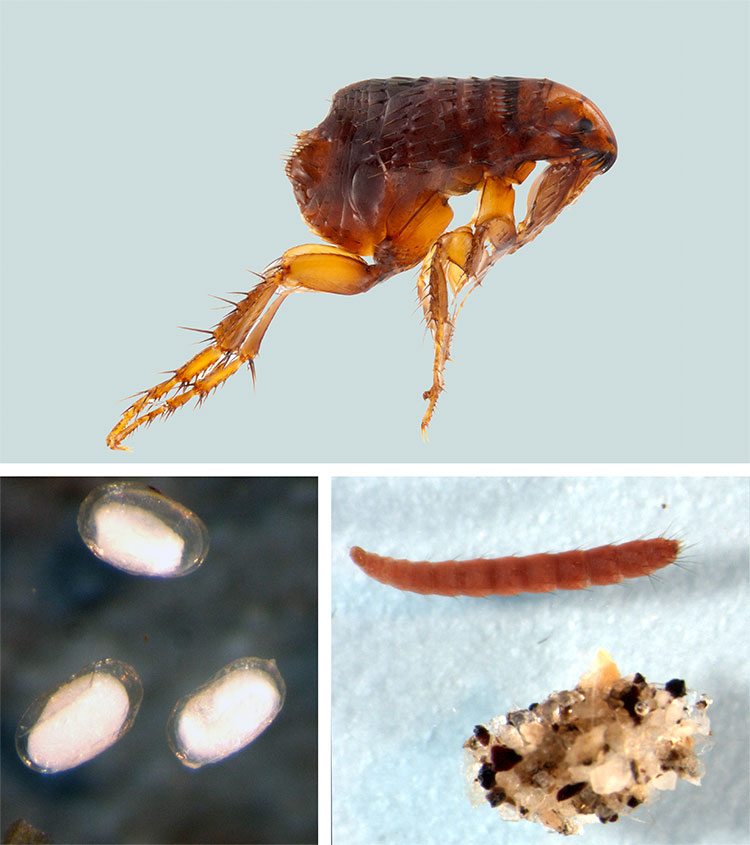
Dog Fleas Life Cycle
Let’s look at each stage of the flea’s life cycle more closely:
The Egg Stage
The flea life cycle begins with a blood meal. The female flea feeds off a host (i.e. your pet) before laying her eggs. Flea eggs are tiny, white specs – barely visible to the naked eye. They are laid in your dog’s fur in clutches of roughly 20.
As your pet moves around, some of the eggs will fall off and be distributed throughout your household – i.e. your pet’s daily environment, where most of their time is spent. As much as 50% of the total flea population found in the average home is made up of eggs.
Flea eggs can take between 2-10 days to fully develop and hatch when the environment is just right. Higher temperatures and humidity levels will lead to the eggs hatching faster, while colder, drier conditions will prolong the incubation period.
Upon hatching, the flea has moved on to its second life stage: larva.
The Larvae Stage
When the larvae emerge from their eggs, they are completely blind and will try to keep out of the light as far as possible. Larvae take a few weeks to develop and during this stage, they feed on what is known as flea dirt – pre-digested blood that mature fleas excrete. The larvae will also feed on additional organic material from the environment.
Flea larvae are white, nearly translucent, 1/4-inch long limbless specs which make up roughly 35% of an average household’s flea population. Approximately 12 days after hatching, the larvae will begin spinning their cocoons.
Their third life stage has begun – the pupae stage.
The Pupae Stage
This is the final stage of a flea’s life cycle before it reaches maturity and accounts for roughly 10% of the average flea population found in homes. The pupae stage lasts for approximately 23 days before the adult fleas emerge. Should environmental conditions not be optimal, the developing fleas can remain in this state for months or sometimes even years.
The flea pupae remain protected against the elements thanks to their sticky cocoons, which allow them to hide within carpeting. Here, they even remain unaffected by light sweeping and vacuuming. Their cocoons also help protect the developing fleas against numerous household chemicals.
Sneaky as they are, the adult fleas will only emerge from their cocoons when they sense a host nearby. This can be either through body heat, raised carbon dioxide levels or feeling the vibrations of the nearby host. Thus, you and your pets walking about or moving around can alert the awaiting adult fleas that it’s time to come out and start feeding.
3-8 weeks (or even months) after initially becoming pupae, the adult fleas emerge and the final adult life stage begins.
The Adult Stage
Adult fleas are so ravenous that they can begin feeding a mere five minutes after crawling from their cocoons. A female flea is able to consume 15 times her own body weight in blood and will start mating between 4-48 hours after feeding. She won’t be able to lay her eggs until she’s had her bloody meal.
An adult flea fresh from the cocoon has a flat body and is extremely tiny and dark in colour. As soon as they’ve started feeding off their host, their colour lightens and their bodies grow larger and more traditionally flea-shaped.
Adult fleas make up a mere 5% of the average household’s flea population. Once this final stage of their development is reached, fleas prefer to remain on a single host for life – which is why it’s vitally important for you to stay on top of your pup’s Bravecto® treatments. This will ensure that they remain tick-, flea- and mite-free all year long.
Be sure to check out this informative video of the flea life cycle for a bite-sized recap:
How Bravecto® Deals with Dog Fleas in All Life Stages
When treating your pooch with Bravecto® you can rest assured that fleas will start dying within 2 hours of administering treatment and more than 90% of fleas will have died after 8 hours.
That’s the power of Bravecto®. A single dose puts a stop to any current infestation and prevents future infestations for at least 12 weeks without having to re-dose, depending on the Bravecto® product you choose. It’s the Bravecto® difference: the treatment remains effective for longer, stopping the nearly 3-month long flea life cycle in its tracks.
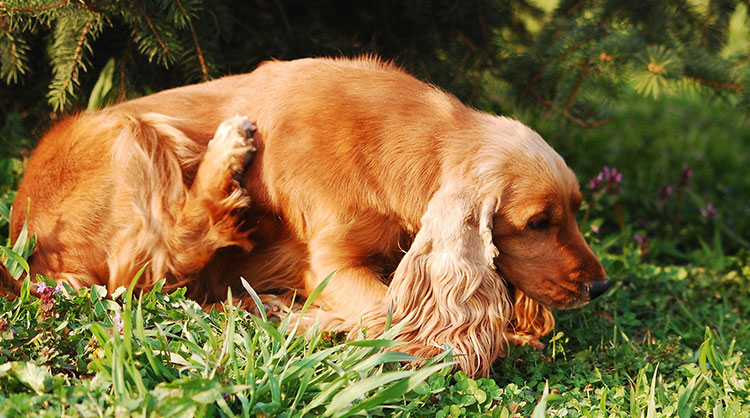
Dog Fleas Love to Hide Out (But Where?)
Your dog may bring some unwanted guests into your home. Ticks and fleas can enter your home via your beloved pets and once they’ve found their way in, it can be a real struggle to get them all out.
Because fleas thrive in hot and humid conditions, it’s advised that you start the year (and the peak of summer) off right by treating your dog with Bravecto®. Not only will Bravecto® de-flea your dog but will, in turn, prevent your entire household environment from becoming infested.
Learn how you can remove fleas from your home and yard below.
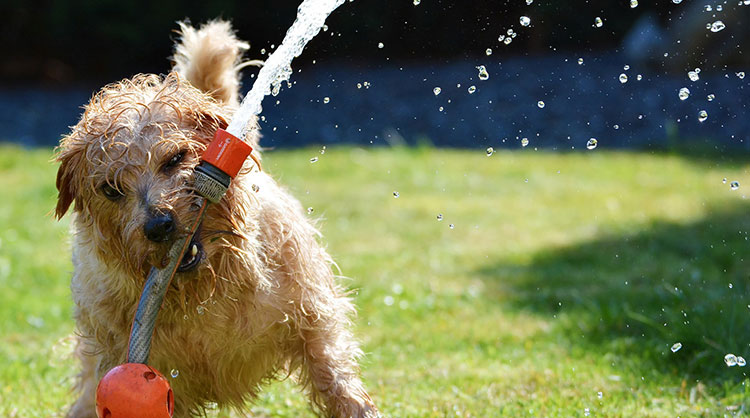
Fleas on Dogs… and Carpets and Couches
After applying a Bravecto® for Dogs treatment to a flea-infested pup, it’s especially important to give your entire home a thorough cleaning. It’s not so bad, really – now you’ll get to start the new year off in a clean (and maybe even less cluttered) home! Common flea hide-outs in your home include carpets, areas surrounding pet bedding and upholstered furniture.
Cleaning your home to prevent a re-infestation isn’t a quick fix, though. It’ll take you a few weeks of regular and thorough vacuuming, as well as washing of toys and bedding in warm, soapy water. All of this will help to get rid of fleas in all stages of life, be it egg, larvae, pupae or adult. It’s important to properly seal and dispose of vacuum bags after cleaning, to avoid any fleas escaping.
If you’re in a bit of a rush, you can even try speeding up the emergence of fleas still in the pupae stage by increasing your home’s temperature and using a humidifier. This should cut some time off your long-term cleaning regiment, but remember: it’s always better to be sure (and thorough) than sorry.
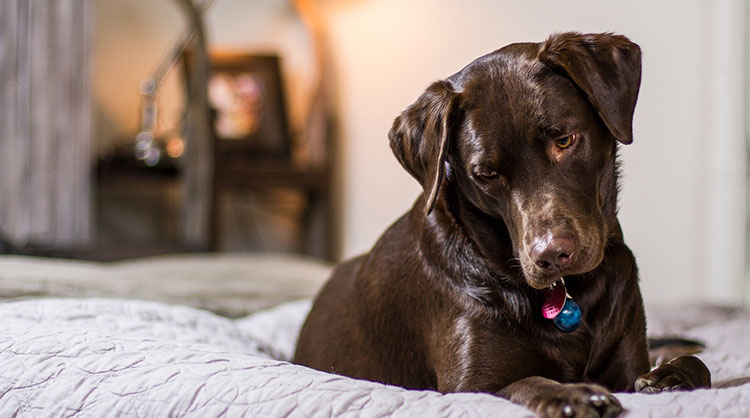
Dog Fleas Amongst the Trees
Should you suspect that you may have a flea infestation in your yard, be sure to search shady areas with lots of moisture – especially if your pets enjoy spending time there. Places fleas love to frequent in the yard include:
- The doghouse/kennel
- Outdoor furniture
- The house’s perimeter
- Under the porch
Prevent fleas on dogs with Bravecto® treatment first, before turning your attention to the yard. After your dog is tended to, begin by cleaning up your yard. Piles of leaves, stacks of wood and mounds of rock are all perfect hideaways for fleas.
Upon deciding what flea removal method you’re going to use in the yard – be it all-natural or insecticide – remove all dog and children’s toys from the area. Then proceed to treat your pet’s favourite places first. If your dog only has access to certain parts of the yard, then you won’t have to treat the entire property.
If you decided on an insecticide, don’t treat your dog’s kennel or doghouse with it. Rather opt for an all-natural and non-toxic solution. Also, be sure to keep kids and pets away from the treated areas until they’ve dried or until the product’s instructions say it’s safe.
After treating your dog against ticks, fleas and mites with Bravecto®, as well as giving both your house and yard a thorough clean, you ought to have accomplished a few of your new year’s resolutions already. Plus, you’ll feel fresh and ready to take 2020 by storm, with your loyal pal next to you – completely free of external parasites!
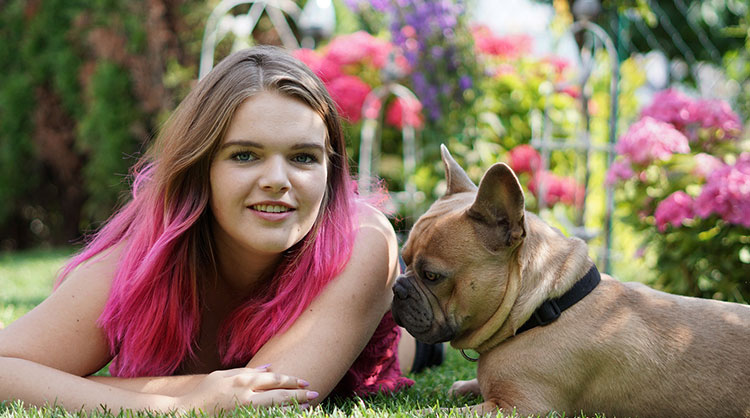
How Bravecto® Gets Rid of Dog Fleas
Bravecto® for Dogs is available in two forms: a deliciously chewy treat or a convenient topical treatment. The Bravecto® Chew gives your canine companion 12 weeks of tick and flea protection with a single dose. Bravecto® Spot-On for Dogs, on the other hand, will protect your pooch for 4 whole months against ticks and 6 months against fleas – also all in a single dose. Both last at least 3x longer than traditional monthly treatments, allowing you and your pup to focus your attention on achieving your goals this new year.
One Bravecto® Chew should be given to your dog by mouth like a treat. The Bravecto® Spot-On for Dogs should be applied by parting their hair and applying a single dose directly to the exposed skin between the shoulder blades.
Aside from being long-lasting and fast-acting, know what the best part is? Bravecto® may be used in all dogs and puppies, including those:
As young as eight weeks
- that weigh at least 2 kg
- pregnant
- lactating
- breeding
- with the MDR1 gene mutation, such as border collies
Afraid you’ll forget to re-dose your dog? Don’t worry, Bravecto® still has your back. Simply download the free reminder app, create a profile for your dog, set the date on which you last gave Bravecto® and – that’s it! You’ll receive a reminder when your dog is due for their next treatment, ensuring they’re protected all year long.
Bravecto® is one of the most comprehensive flea treatments for dogs available on the market today. To understand more about the fly anatomy you can read Wikipedia’s research on this topic. But first, check out our awesome videos below:
Check out These Videos Explaining Exactly How Bravecto®’s Products Go About Protecting Your Pup Against Ticks, Fleas and Mites:
Subscribe to our Newsletter
Get to know your furry friend better! Sign up for all things dog- or cat-related.
The Hairy Facts about the dreaded hairball
12 April 2021
Help! My dog’s barking mad! Volume 2
12 April 2021
Your Itchy, Scratchy Cat – All About Cat Skin Problems
12 April 2021
The Dog’s Diet: A Bone of contention?
01 April 2021
Mango Fly Worms: How to Spot and Eliminate them
Posted on November 28,2019
Managing Mange And Mites In Your Dog
Posted on June 11,2018
Why Do Cats Purr and How? Learn What Your Cat Is Saying
Posted on October 14,2020
How to Get Rid of Ear Mites in Dogs
Posted on November 06,2019









